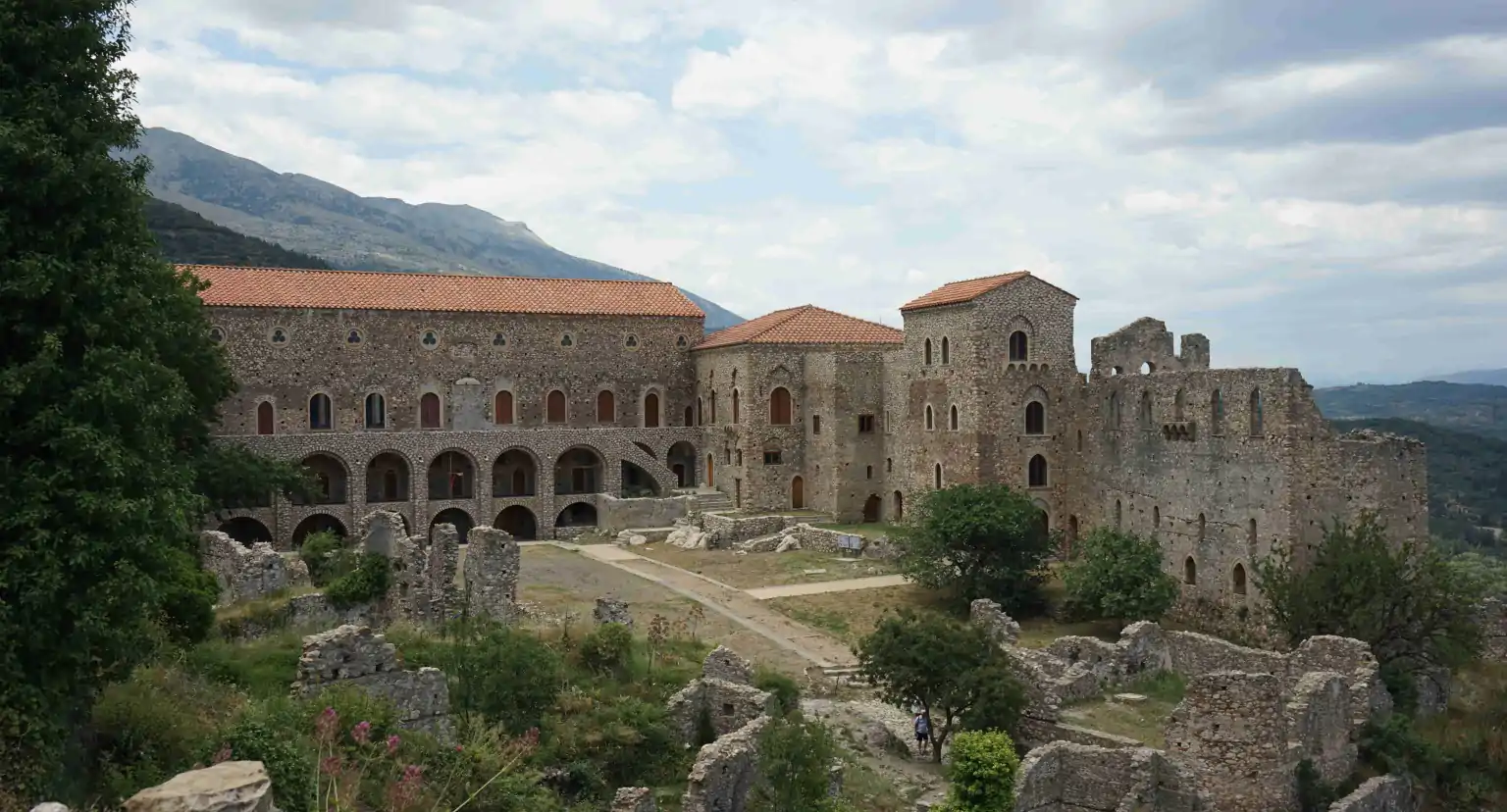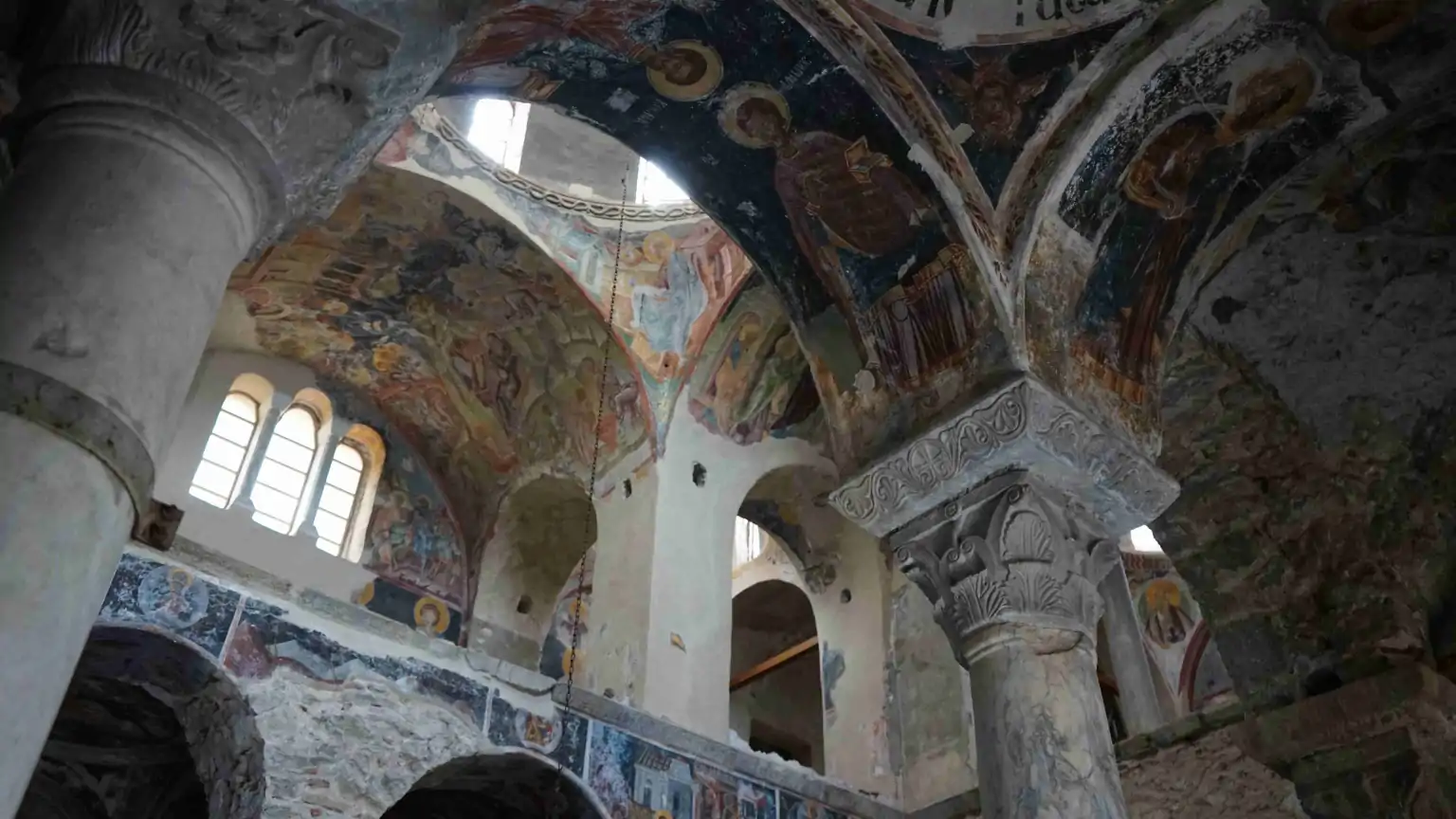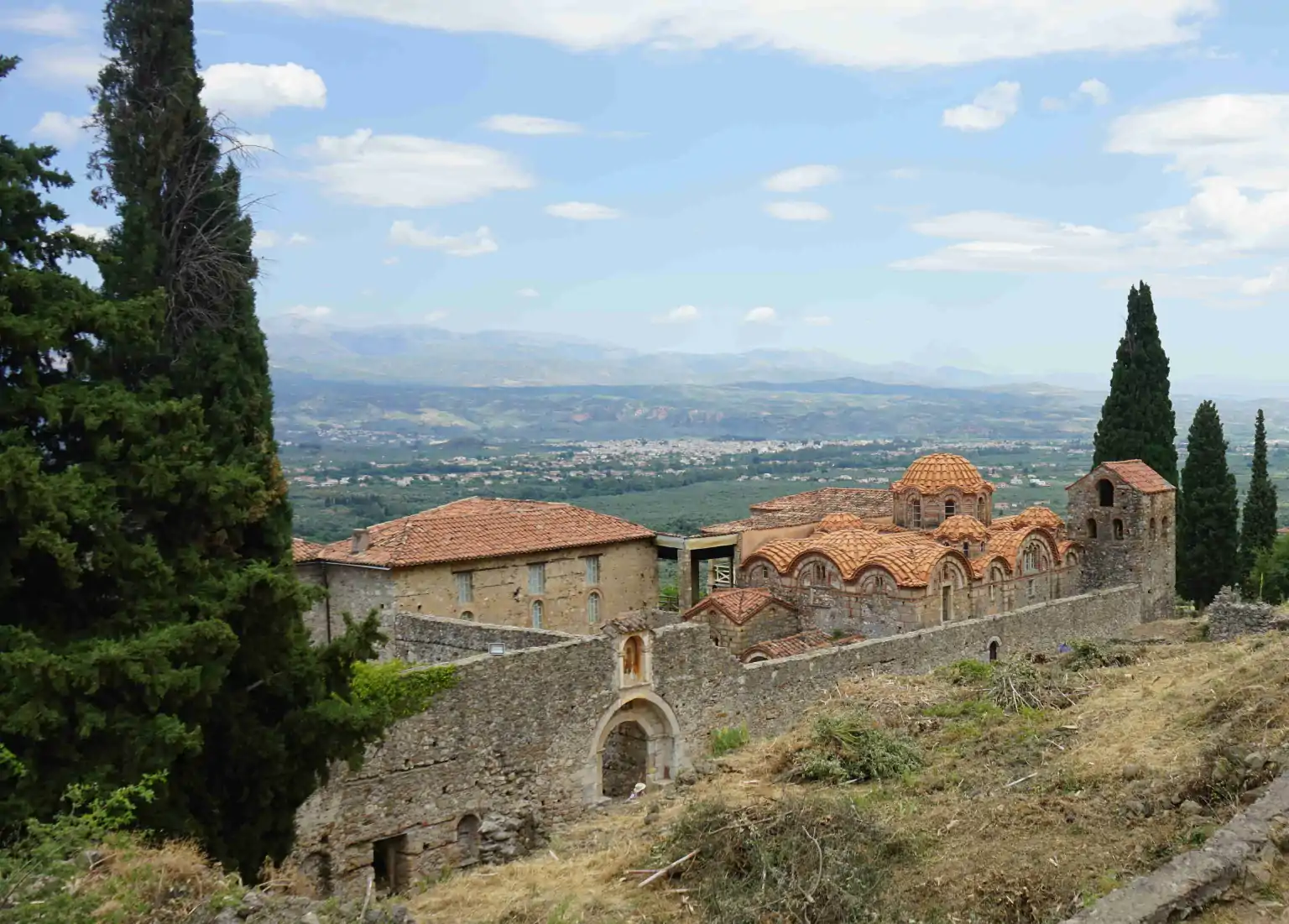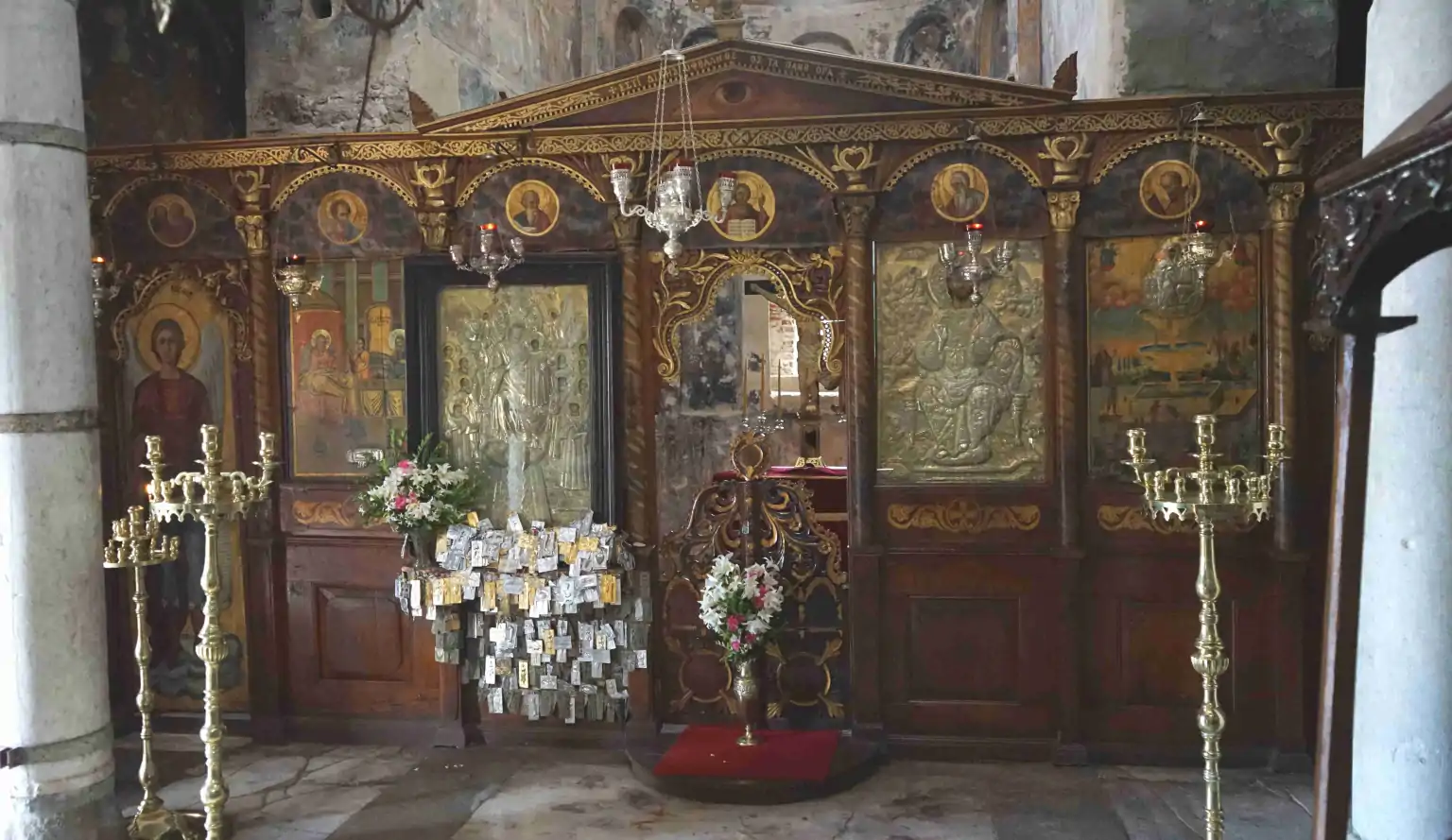Mystras – World Cultural Heritage

In 1249 AD, crusaders built a fortress on a hill north of today’s Sparta. After the forced withdrawal of the crusaders, the locals founded the Byzantine city on the slope below the castle. It had tens of thousands of inhabitants and was the centre of the region.
Mystras the World Culture Heritage Site is approx. 1 hour’s drive from the holiday home. There are two car parks, one at the bottom and one above the site. As the slope is steep, it is advisable to start your visit at the top. You can then take a taxi back from the lower car park. Nowadays, many tourists walk through the narrow, winding streets of this medieval town. When the sky is overcast, the sight is a frequent destination for tourists. If the sun is shining, take plenty of water with you as there is little shade.
Mystras was conquered by the Ottomans in 1460. As a result of Francesco Morosini’s Peloponnese campaign, the town came into Venetian possession in 1687, but fell back to the Ottoman Turks in 1715. In 1770, during a Russian-Turkish war, the city’s splendour began to fade. Later, Ottoman auxiliary troops devastated the city. During the Greek War of Independence in 1825, the city was so destroyed that it was not rebuilt.
Some churches (Agia Sophia, Agios Dimitrios) have been preserved with their colourful frescoes. The Pantanassa monastery is still inhabited.


